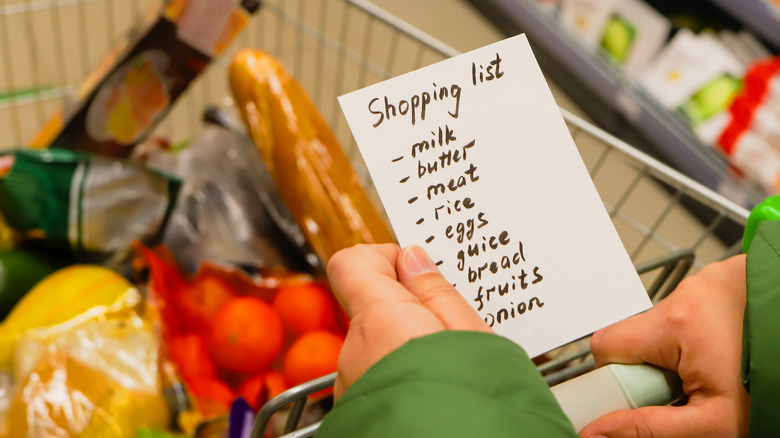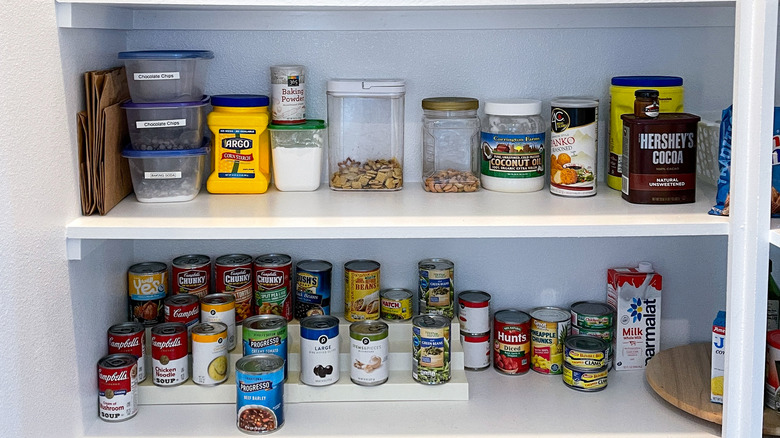Save Precious Time At The Store With A Reverse Grocery List
The concept of a grocery list is built around organization. It tells you what you need and helps you keep track of what you definitely have and don't have at home, whether it's milk, bread, or general snack items. It's very hard to mess up a grocery order when you have a grocery list in your hand, to the point you'd have to go out of your way to get it wrong. Indeed, shopping lists have been a part of human culture going back centuries, with one shopping list dated 1633 being found during renovations on a country home in England (per Smithsonian Magazine).
Everyone has different ways of making a grocery list. Some people may keep a piece of paper on the fridge and write down whatever they need over the course of the week. Some people may type up a list on their phone starting off with the bare essentials first and adding on over time. Others may wait until the end of the week to do a full search of their kitchen and note down anything that they need. No matter what the preferred method is, the purpose of making a grocery list is always the same: writing down what you need the next time you have to run to the grocery store.
But what is a reverse grocery list? How can you maintain a grocery list that's in reverse? What makes this type of grocery list so different that it supposedly helps you save time when you're getting groceries?
A reverse grocery list is more like an inventory sheet
A grocery list, at its most basic, is just a list of random things you'll need to stock up on: things like milk, eggs, cheese, bread, cereal, and so on. This list changes every so often and you usually have to make a new one each time. The reverse shopping list functions more like an inventory list, a master list of everything you have in your pantry or your fridge.
A good way to start a reverse grocery list would be that you dig out everything in your cabinet and see what you have. You can note down what you usually have in your cabinet (such as spices, boxed macaroni and cheese, cans of soup, etc.) on a Google Doc or your phone's notes app. It's like taking inventory at a store, seeing how much of a certain item you carry or have in stock at the moment. Then, if you run out of soup over the week, you simply bring up the master list on your phone and put a checkmark next to the soup, telling you that you will definitely need it next time. When you get the soup on your next grocery run, you remove that checkmark since the item is now back in stock in your pantry. This way, rather than running around the store filling your cart with items that you can't remember if you need, you know exactly what you have to replace.
A reverse grocery list is good for streamlining large orders
The benefit of a reverse grocery list is that you always know what's in your pantry or fridge at any given time; there's no guesswork involved. If the list says you're out of something, then you're out of something. It helps to ensure you don't have any clutter in your pantry and that you aren't buying ingredients that you already have left to use.
While this makes it good for handling large grocery orders — telling you exactly what you need and don't need to get — it's not as good for smaller, more frequent grocery orders like milk or bread. You may go through milk or bread much more frequently than you do items in your pantry that you don't use as often. You don't need to mark that you ran out of milk on your grocery list because chances are you'll just pick some more up on your way home instead of waiting until grocery day. The reverse grocery list is more for larger orders for things that you use sparingly, like seasonings, condiments, or baking ingredients.


